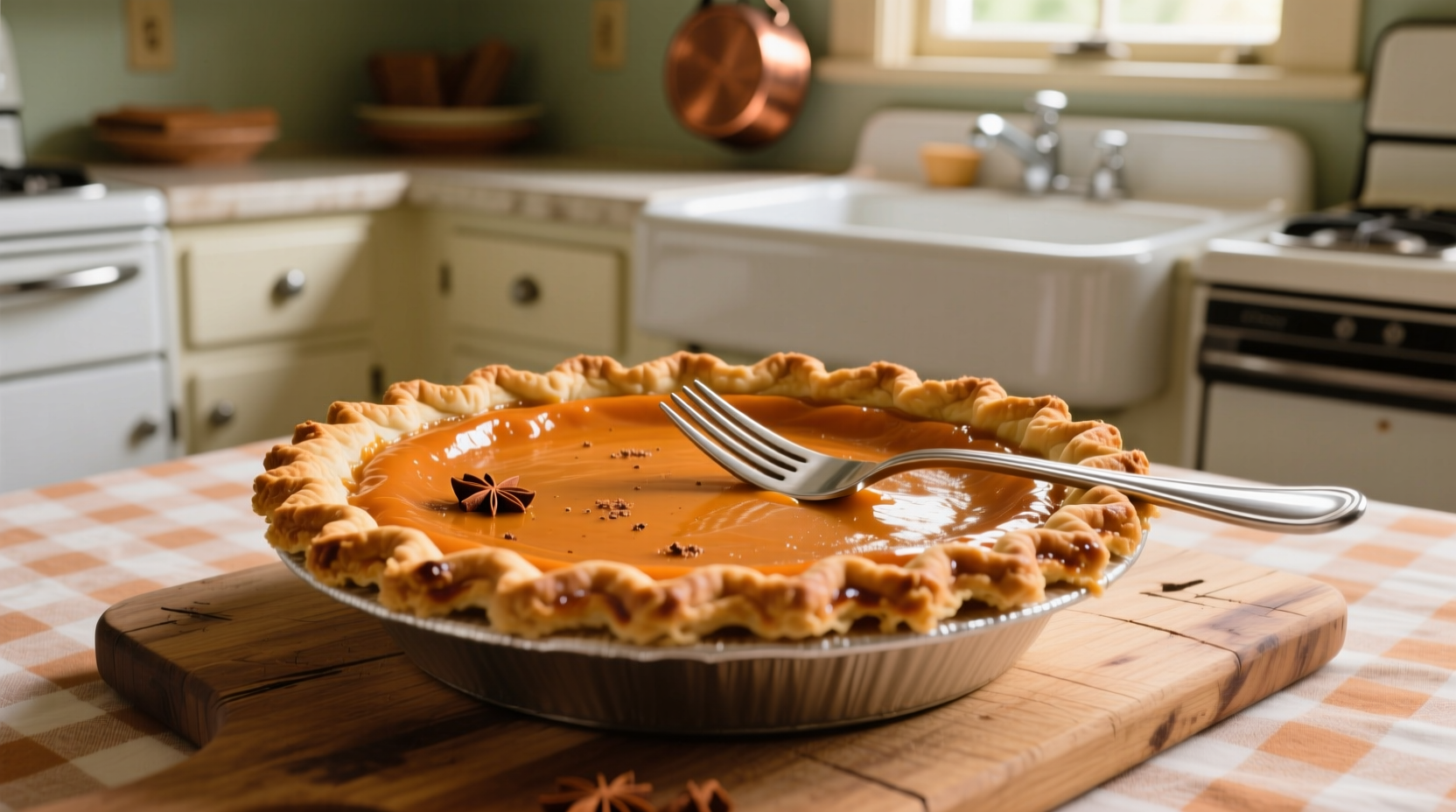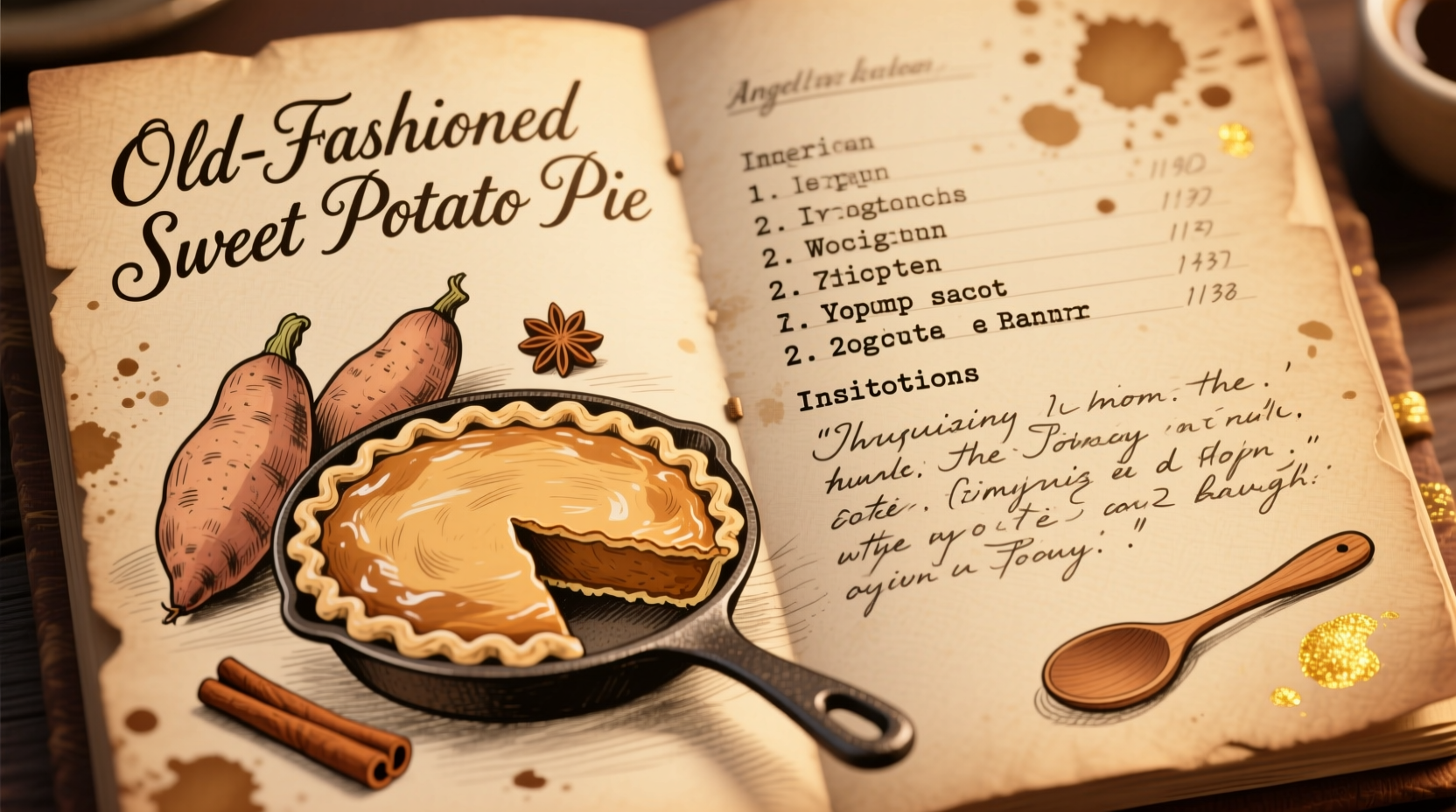The Story Behind America's Beloved Sweet Potato Pie
While pumpkin pie dominates northern holiday tables, sweet potato pie has been the soul of Southern dessert traditions since the 18th century. Unlike modern versions loaded with marshmallows or artificial flavors, the old fashioned sweet potato pie recipe relies on humble ingredients transformed through careful technique. This dessert emerged from African culinary traditions brought to America, where enslaved cooks adapted West African yam preparations using the more readily available sweet potatoes. By the Civil War era, it had become a staple in Southern households, featured in handwritten cookbooks like What Mrs. Fisher Knows About Old Southern Cooking (1881), one of the earliest cookbooks authored by an African American.
| Era | Key Developments | Historical Source |
|---|---|---|
| 1700s | Enslaved cooks adapt West African yam recipes using sweet potatoes | Smithsonian National Museum of African American History archives |
| 1881 | First published recipe in Mrs. Fisher's cookbook | Smithsonian NMAAHC |
| Early 1900s | Standardized with evaporated milk during WWI sugar rationing | USDA Historical Cookbooks Collection |
| 1940s | Becomes symbol of Southern identity during Great Migration | Library of Congress American Folklife Center |
Why This Old Fashioned Recipe Stands Apart
Modern recipes often sacrifice authenticity for convenience, but our traditional sweet potato pie from scratch preserves the delicate balance that made this dessert iconic. The critical difference lies in three elements often overlooked today:
- Boiled, not baked sweet potatoes - Creates smoother texture without caramelization that alters flavor
- Freshly grated nutmeg - Pre-ground loses 70% of its aromatic compounds within hours (University of Maryland Spice Research)
- Hand-whisked filling - Prevents air bubbles that cause cracking during baking

Authentic Ingredients: What Makes It "Old Fashioned"
The magic of this vintage sweet potato pie recipe comes from ingredient ratios perfected over centuries. Note these critical distinctions from modern versions:
| Traditional Recipe | Modern Adaptations | Why It Matters |
|---|---|---|
| Boiled sweet potatoes | Baked sweet potatoes | Boiling preserves delicate flavor without caramelization |
| Real butter crust | Shortening crust | Butter creates flakier texture with richer flavor |
| Freshly squeezed orange juice | Lemon juice | Orange complements sweet potato's earthiness |
| Hand-whisked filling | Blender or food processor | Prevents air bubbles that cause cracking |
Step-by-Step: Making the Perfect Old Fashioned Sweet Potato Pie
Crust Preparation (15 minutes)
For an authentic homemade sweet potato pie crust, combine 1¼ cups all-purpose flour, ½ teaspoon salt, and ½ cup chilled butter cubes. Cut butter into flour using a pastry cutter until pea-sized crumbs form. Sprinkle 3-4 tablespoons ice water while mixing until dough holds together. Form into a disk, wrap in parchment, and chill for 30 minutes. Roll out to 12-inch circle and fit into 9-inch pie plate. Crimp edges and chill while preparing filling.
Filling Technique (25 minutes)
Peel and boil 2 lbs sweet potatoes until fork-tender (about 25 minutes). Drain thoroughly and mash until completely smooth - no lumps allowed. In a separate bowl, whisk 2 large eggs, ½ cup melted butter, ¾ cup brown sugar, ¼ cup maple syrup, 2 tablespoons orange juice, 1½ teaspoons cinnamon, ½ teaspoon freshly grated nutmeg, ¼ teaspoon ginger, and ¼ teaspoon salt. Gradually fold sweet potatoes into liquid mixture until fully incorporated. Pour into chilled crust.
Baking Secrets (50-55 minutes)
Preheat oven to 350°F (175°C). Place pie on center rack with aluminum foil shield over edges (prevents over-browning). Bake 50-55 minutes until center jiggles slightly when nudged. Cool completely on wire rack - this allows filling to set properly. For best results, make pie one day ahead; flavors deepen overnight.
Avoiding Common Pitfalls
Even experienced bakers encounter issues with this classic Southern sweet potato pie recipe. Here's how to prevent the most frequent problems:
- Cracking surface - Overmixing incorporates too much air. Always fold filling gently by hand
- Soggy bottom crust - Blind bake crust for 10 minutes before adding filling
- Watery filling - Insufficient draining of boiled potatoes. Press mashed potatoes through sieve
- Dull flavor - Using pre-ground spices. Freshly grated nutmeg makes all the difference
Serving Traditions and Variations
The authentic old fashioned sweet potato pie was traditionally served at room temperature with nothing more than a dusting of cinnamon. For special occasions, add whipped cream made with 1 cup heavy cream, 2 tablespoons bourbon, and 1 tablespoon powdered sugar. Regional variations include:
- Lowcountry style (South Carolina) - Adds 1 tablespoon molasses for deeper flavor
- Gulf Coast version (Louisiana) - Incorporates 2 tablespoons pecan liqueur
- Appalachian twist - Uses sorghum syrup instead of maple for earthier sweetness
Storage and Make-Ahead Tips
This pie actually improves with time. Store covered at room temperature for up to 2 days or refrigerate for 4 days. For longer storage, freeze whole pie (unwhipped) for up to 2 months. Thaw overnight in refrigerator before serving. Never freeze with whipped cream topping - add fresh when serving.











 浙公网安备
33010002000092号
浙公网安备
33010002000092号 浙B2-20120091-4
浙B2-20120091-4